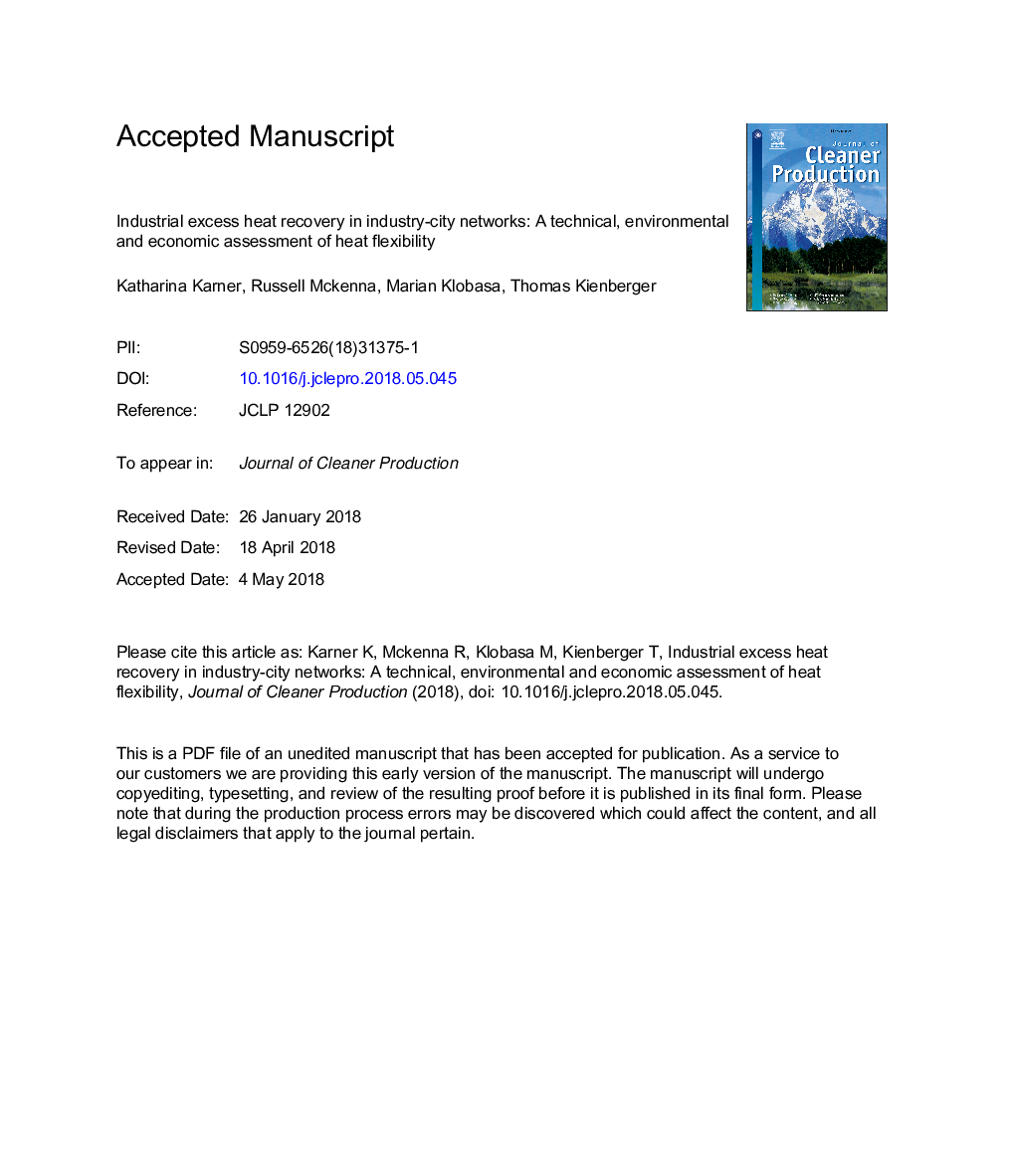| Article ID | Journal | Published Year | Pages | File Type |
|---|---|---|---|---|
| 8094679 | Journal of Cleaner Production | 2018 | 33 Pages |
Abstract
The decarbonization of the energy system is a major objective of the European Union. Industry's share of end energy demand is 25% (2015) and therefore offers a good starting point. Numerous studies prove the economic feasibility and environmental benefits of using industrial excess heat. The temporal mismatch of the urban heat demand and the industrial excess heat does not allow a 100% utilization, hence more flexibility is needed in industry-city networks. Until now, flexibility has focused almost exclusively on the electricity sector. This paper proposes measures to enable heat flexibility and uses a case study to evaluate their technical, environmental and economic feasibility. Heat storages, city clusters (linking two cities via district heating) and industrial load shifting are considered as flexibility options. In contrast to the previous load shift approaches, the industrial processes and thus the supply of industrial excess heat is shifted in such a way that it will result in a better match with the urban heat demand. The case study shows that the use of industrial excess heat results in environmental and economic benefits and requires the use of flexibility options. For all three criteria, the best result is achieved by creating a city cluster, followed by the integration of heat storages. These flexibility options enable an industrial excess heat utilization of up to 100% and a reduction of CO2 emissions to almost half of the initial situation. The load shifting is subject to uncertainties and does not lead to economical or environmental advantages. It is therefore recommended to use industrial excess heat and, if there is another city in close proximity, to create a city cluster or to integrate a heat storage.
Related Topics
Physical Sciences and Engineering
Energy
Renewable Energy, Sustainability and the Environment
Authors
Katharina Karner, Russell McKenna, Marian Klobasa, Thomas Kienberger,
